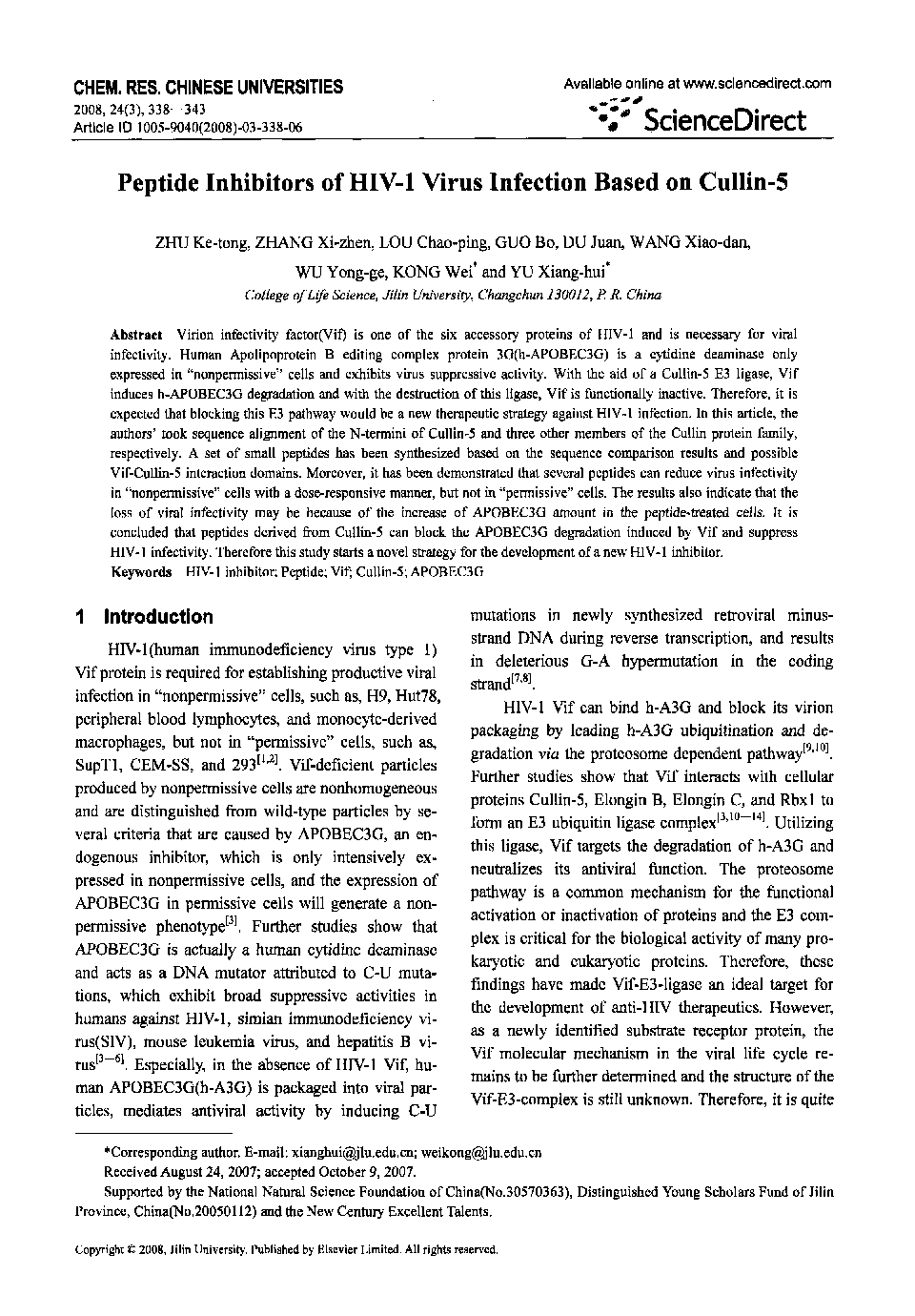| Article ID | Journal | Published Year | Pages | File Type |
|---|---|---|---|---|
| 1251574 | Chemical Research in Chinese Universities | 2008 | 6 Pages |
Abstract
Virion infectivity factor(Vif) is one of the six accessory proteins of HIV-1 and is necessary for viral infectivity. Human Apolipoprotein B editing complex protein 3G(h-APOBEC3G) is a cytidine deaminase only expressed in “nonpermissive” cells and exhibits virus suppressive activity. With the aid of a Cullin-5 E3 ligase, Vif induces h-APOBEC3G degradation and with the destruction of this ligase, Vif is functionally inactive. Therefore, it is expected that blocking this E3 pathway would be a new therapeutic strategy against HIV-1 infection. In this article, the authors' took sequence alignment of the N-termini of Cullin-5 and three other members of the Cullin protein family, respectively. A set of small peptides has been synthesized based on the sequence comparison results and possible Vif-Cullin-5 interaction domains. Moreover, it has been demonstrated that several peptides can reduce virus infectivity in “nonpermissive” cells with a dose-responsive manner, but not in “permissive” cells. The results also indicate that the loss of viral infectivity may be because of the increase of APOBEC3G amount in the peptide-treated cells. It is concluded that peptides derived from Cullin-5 can block the APOBEC3G degradation induced by Vif and suppress HIV-1 infectivity. Therefore this study starts a novel strategy for the development of a new HIV-1 inhibitor.
Keywords
Related Topics
Physical Sciences and Engineering
Chemistry
Chemistry (General)
Authors
Ke-tong ZHU, Xi-zhen ZHANG, Chao-ping LOU, Bo GUO, Juan DU, Xiao-dan WANG, Yong-ge WU, Wei KONG, Xiang-hui YU,
